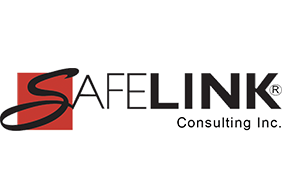OSHA's update effective January 1, 2024 expands submission requirements for certain employers in high-hazard industries. Continue reading to gain further insights into this tracking update for high-hazard industries.
Certain establishments must electronically submit to OSHA detailed information about each recordable injury and illness entered on their previous calendar year's OSHA 300 Log and 301 Incident Report forms (29 CFR 1904.41). This includes the date, physical location, and severity of the injury or illness; details about the worker who was injured; and details about how the injury or illness occurred.
Only establishments with 100 or more employees in designated industries are required to submit case-specific information from the OSHA Form 300 Log and the OSHA Form 301 Incident Report.
Establishments that had a peak employment of 100 or more employees during the previous calendar year meet this size criteria.
The designated industries are listed in Appendix B to Subpart E of 29 C.F.R. Part 1904. Currently dental laboratories in NAICS 339116 and dental practices in NAICS 621210 are not listed on Appendix B so this update does not affect them unless their state plan publishes more stringent requirements. Dental labs are still on Appendix A, therefore, if they have 20-249 employees they must submit Form 300A electronically each year.
One way to determine if your establishment(s) is required to report these data is by using OSHA's ITA Coverage Application.
The requirements apply to establishments covered by Federal OSHA, as well as establishments covered by states with their own occupational safety and health programs (i.e., State Plans).
The data must be electronically submitted through OSHA's Injury Tracking Application (ITA). There are 3 ways to submit the data: (1) webform on the ITA, (2) submission of a csv file to the ITA, or (3) use of an application programming interface (API) feed. The ITA will begin accepting 2023 injury and illness data on January 2, 2024. The due date to complete this submission is March 2, 2024. The submission requirement is annual, and the deadline for timely submission of the previous year's injury and illness data will be on March 2 of each year.
OSHA's intent is to publish some of this data to allow employers, employees, potential employees, employee representatives, current and potential customers, researchers and the general public to use information about a company's workplace safety and health record to make informed decisions. OSHA believes that providing the public access to this data will ultimately reduce occupational injuries and illnesses.
Employers must post OSHA Form 300A Injury Illness by February 1st
Each year, from February 1st through April 30th, employers who meet the OSHA requirement must post their Summary of Work-Related Injuries and Illnesses, OSHA Form 300A for employees to review. Employers who meet OSHA's electronic submission tracking requirements must submit information to OSHA by March 2nd each year.
OSHA Form 300A summarizes work-related injuries and illnesses recorded within the previous calendar year. OSHA states that the summary must be posted in common work areas where employee notices are customarily placed.
According to the OSHA website, under OSHA's recordkeeping regulation, certain covered employers are required to prepare and maintain records of serious occupational injuries and illnesses using the OSHA 300 Log of Work-Related Injuries and Illnesses. This information is important for employers, workers and OSHA in evaluating the safety of a workplace, understanding industry hazards, and implementing worker protections to reduce and eliminate hazards.
Unless your state OSHA plan does not provide for a partial exemption, federal OSHA notes that there are two classes of employers that are partially exempt from routinely keeping injury and illness records. First, employers with ten or fewer employees at all times during the previous calendar year are exempt from routinely keeping OSHA injury and illness records. Second, establishments in certain low-hazard industries are also partially exempt from routinely keeping OSHA injury and illness records. See OSHA’s Recordkeeping Rule to learn more about who needs to keep records.
Notice: Keep in mind that this guidance is federal. Based on the location of your business, there may also be state specific requirements.
Another part of recordkeeping is electronic submission of Injury and Illness data.
March 2nd is the date that the information on Form 300A must be reported to OSHA by employers who meet OSHA's electronic submissions requirements.
Attention: Not all establishments are covered by this reporting requirement. Only a small fraction of establishments is required to electronically submit their Form 300A data to OSHA. Establishments that meet any of the following criteria DO NOT have to electronically report their information to OSHA. Remember, these criteria apply at the establishment level, not to the firm as a whole.
The establishment's peak employment during the previous calendar year was 19 or fewer, regardless of the establishment's industry.
The establishment's industry is on Appendix A to Subpart B of OSHA’s recordkeeping regulation, regardless of the size of the establishment.
The establishment had a peak employment between 20 and 249 employees during the previous calendar year AND the establishment's industry is NOT on Appendix A to Subpart E of OSHA’s recordkeeping regulation.
If you have any questions or need OSHA recordkeeping training, please contact SafeLink Consulting or visit our website to learn more about how we can help your business.
How to Achieve OSHA Compliance for the Dental Practice
OSHA Compliance for the Dental Laboratory
Learn more about what SafeLink Consulting can do to help your business with compliance services, including safety compliance, to meet OSHA training requirements and quality system consulting to meet FDA compliance. SafeLink Consulting assists businesses with workplace safety training, infection control training, HIPAA training online, quality systems, assessments, audits, due diligence, and more.
Industries include:
Dentistry compliance - assisting the dental practice with meeting requirements for OSHA, HIPAA, EPA, and CDC guidelines, patient safety and employee health & safety
Dental Laboratory compliance - assisting the dental lab with meeting requirements for OSHA, FDA, and CDC guidelines, employee health & safety, plus FDA requirements for lab manufacturing custom implant abutment /gmp for medical device manufacturers
Medical Device Manufacturers compliance - assisting with meeting OSHA compliance & FDA requirements, GMP - good manufacturing practices
General Industry compliance - assisting with OSHA compliance and FDA compliance as it pertains to the specific business
Beverage Industry compliance - assisting beverage businesses such as the craft brewery, winery, cidery, distillery, vintner with meeting OSHA compliance, health & safety, FDA requirements / GMP - Good Manufacturing Practices.
Get notification when new regulatory compliance training courses are added plus upcoming events by subscribing to our email news.







Leave Comment